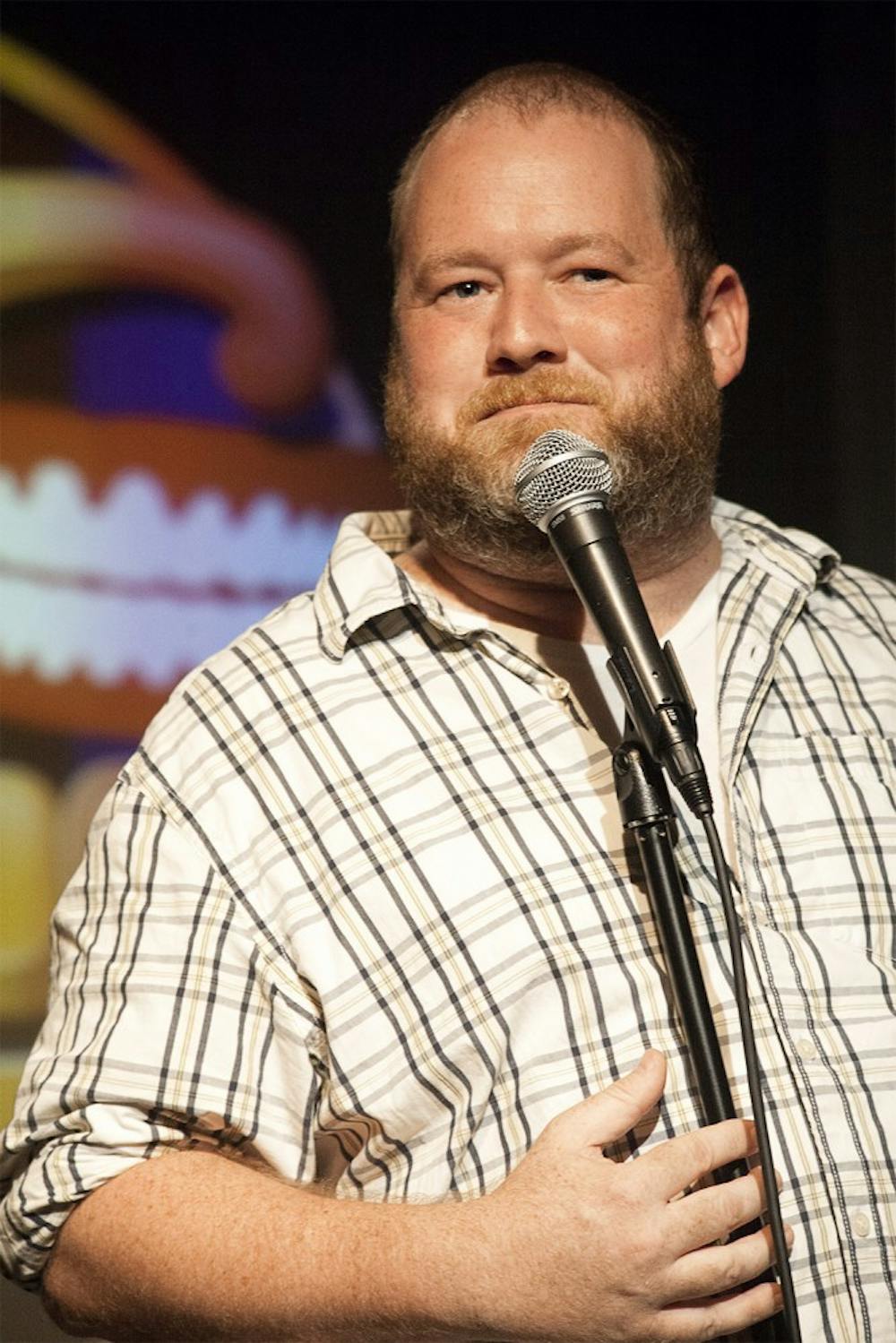He sees people of all different races, ages and nationalities as he imagines the audience. They’re not spread out, but close to each other and the stage. Their eyes aren’t glued to the television hanging on the wall behind the bar, but facing him, actively listening to what he has to say because they want to.
As stand-up comedian Sean Donnelly returns from this perfect setting he’s constructed in his mind, he comes to a conclusion.
“I like the idea that you’re cheering people up,” Donnelly said. “I like that there’s an immediate reaction to something you’ve spent so much time on.”
Donnelly is the headliner at the Comedy Attic this weekend. His first show will begin at 8 p.m. Thursday followed by shows at 8 p.m. and 10:30 p.m. Friday and Saturday. He has delivered jokes about the jobs he had before he became a full-time comedian and said none of them allowed him to feel this way.
He reasoned he might be able to cheer up a fellow employee when he was a facility worker at the advertising agency or the reinsurance company where he used to work, but he said that is nothing compared to what he can do with his new platform.
With it he performed routines on “Conan” and the “Late Show with David Letterman,” appeared on a slew of Comedy Central programming and currently broadcasts his own weekly podcast titled “My Dumb Friends” with Dan St. Germain.
In November 2015, he released an album titled “Manual Labor Face” and his first 30-minute special.
“My philosophy is you have to have your hands in a lot of different things because there’s such a content grab and everyone’s out there wanting more and more every day,” Donnelly said. “It’s not an overnight thing anymore — like you do Carson and he calls you over the next day and you’re Jerry Seinfeld. It’s more of, ‘Hey, here’s another thing I’m putting out, I hope you like it.’”
Donnelly is from Garden City, New York, a village in Long Island. He began performing routines in New York City when he was 28 years old, and he said since then he’s learned there is a distinct difference between performing stand-up comedy in and outside of the city.
Some of his local jokes won’t land because not everyone outside of New York understands its cultural nuances, Donnelly said.
But he said there’s also an unusual sense of competition between the audience and the performer in New York City because it’s so hard to stand out with so many comics in the city.
“So (in NYC) you come up with this attitude of, ‘This is a competition and I’m going to win you over,’” Donnelly said. “‘You’re an audience, and you’re fighting me, and I’m going to make you laugh.’”
He said he believes the best stand-up comedians maintain a good balance between the number of shows they have in the biggest stand-up cities, like New York City and Los Angeles, and other areas of the country, like the Midwest and the South, where this dynamic isn’t as prevalent.
“One thing I’ve realized when you go on the road and headline gigs, 90-95 percent of the people come wanting to have a good time,” Donnelly said.
As for what kind of comedian he sees himself as, he’s not really sure. In December 2015, he sat down with another New York comedian and a writer for “The Village Voice,” a New York City alternative newsweekly, to discuss the different types of comedians in the city.
“Some people messaged me and got mad at me for that, but what they don’t realize is that I put myself in the article,” Donnelly said. “I don’t think I would be any one of them; the point is you don’t want to be just one of them. I think I’m an amped-up version of myself on stage.”






